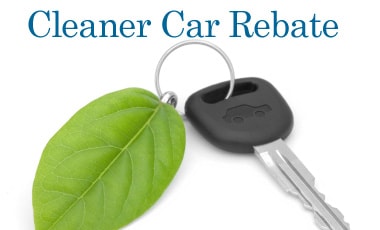Australia's Cleaner Car Rebate Scheme is more likely to benefit from imports over locally manufactured cars. Unfortunately, the Federal Government is unable to prevent most of its $430 million AUD subsidy from flowing offshore.
“I have to work within existing international treaty obligations,” said the minister for innovation, industry, science and research, Senator Kim Carr after postponing the Cleaner Car Rebate Scheme to July 2011.
The Government is not allowed to make the scheme only applicable to locally manufactured cars under the terms of the World Trade Organization agreement.
Just last year, Germany ran into the same problem when trying to run a similar scheme as part of its economic stimulus package after the global financial crisis in 2008. Angela Merkel's government was incapable of keeping the economic stimulus flowing abroad. Initial estimates of car sales and subsidy costs were inaccurate, with a 300,000-sales projection that ended up reaching 2 million.
The problem was that German consumers showed a preference for cheaper cars made in Eastern Europe, particularly Romania and Czech Republic, so the economic benefit went to those countries rather than Germany.
The Australian scheme is based on environmental performance, but only two Australian-made cars achieve the environmental rating of six under the Green Vehicle Guide system, the equivalent of 220 g/km. The two cars are the Toyota Camry and the Holden Commodore, although there will be more eligible locally built cars when the scheme begins.
When asked why Australia could not ignore the WTO guidelines, Senator Carr said Australia “plays in a different league than the US” when it comes to industry assistance measures.
“Given that we are a small trading country, we do not have the same policy flexibility that the United States has. I have to work within existing international treaty obligations," he added.
The Cleaner Car Rebate Scheme will be capped at 200,000 vehicles over four years, to prevent the German scenario happening in Australia as well. Capping the scheme at AU $2,000 per car for 200,000 vehicles gives an indicated subsidy to buyers of AU$400 million. The extra AU$30 million is set aside for administrative expenditures.
“I have to work within existing international treaty obligations,” said the minister for innovation, industry, science and research, Senator Kim Carr after postponing the Cleaner Car Rebate Scheme to July 2011.
The Government is not allowed to make the scheme only applicable to locally manufactured cars under the terms of the World Trade Organization agreement.
Just last year, Germany ran into the same problem when trying to run a similar scheme as part of its economic stimulus package after the global financial crisis in 2008. Angela Merkel's government was incapable of keeping the economic stimulus flowing abroad. Initial estimates of car sales and subsidy costs were inaccurate, with a 300,000-sales projection that ended up reaching 2 million.
The problem was that German consumers showed a preference for cheaper cars made in Eastern Europe, particularly Romania and Czech Republic, so the economic benefit went to those countries rather than Germany.
The Australian scheme is based on environmental performance, but only two Australian-made cars achieve the environmental rating of six under the Green Vehicle Guide system, the equivalent of 220 g/km. The two cars are the Toyota Camry and the Holden Commodore, although there will be more eligible locally built cars when the scheme begins.
When asked why Australia could not ignore the WTO guidelines, Senator Carr said Australia “plays in a different league than the US” when it comes to industry assistance measures.
“Given that we are a small trading country, we do not have the same policy flexibility that the United States has. I have to work within existing international treaty obligations," he added.
The Cleaner Car Rebate Scheme will be capped at 200,000 vehicles over four years, to prevent the German scenario happening in Australia as well. Capping the scheme at AU $2,000 per car for 200,000 vehicles gives an indicated subsidy to buyers of AU$400 million. The extra AU$30 million is set aside for administrative expenditures.
